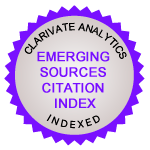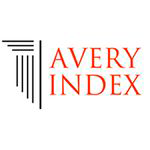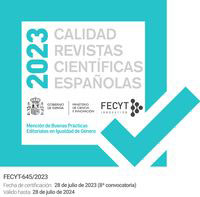Más allá de lo cuantificable: la materia arquitectónica desde la reciprocidad, elaboración y memoria
DOI:
https://doi.org/10.14198/i2.28836Paraules clau:
arquitectura, materia, reciprocidad, elaboración, memoria, gestión material, proyectar, ecología, cultura, patrimonioResum
Durante años, el discurso sobre la gestión de los recursos materiales en la arquitectura se ha centrado mayoritariamente en indicadores cuantitativos como la huella de carbono. Si bien estos parámetros son necesarios, limitarse a ellos excluye otros aspectos fundamentales de la materialidad en la arquitectura. En este artículo, a través de teorías y casos de estudio, se exploran tres dimensiones cualitativas que amplían y enriquecen el debate: la reciprocidad, que considera la relación de flujos que requiere la materialización de la arquitectura en su totalidad; el grado de elaboración de la materia, que refleja cómo y hasta qué punto la técnica transforma la materia para hacerla utilizable; y la memoria, que aborda el valor simbólico y patrimonial de lo construido. Así, la reciprocidad, elaboración y memoria latentes en la materia ofrecen razones adicionales para valorarla. Algo tan necesario como enriquecedor para el proyecto arquitectónico.
Referències
Almarcegui, L., Zaya, O., Biennale di Venezia Venedig 2013, & Ausstellung "Lara Almarcegui" (Venedig) 2013.06.01-11.24. (2013). Lara Almarcegui [Pabellón Español, 55a Exposición Internacional de Arte. La Biennale di Venezia]. Turner.
Anusas, M., & Ingold, T. (2013). Designing Environmental Relations: From Opacity to Textility. Design Issues, 29(4), Article 4. https://doi.org/10.1162/DESI_a_00230
Beaumont, E. (2020, abril 22). Dark ecology: Climate Museum in Lleida by Estudi d'Arquitectura Toni Gironès. The Architectural Review. https://www.architectural-review.com/buildings/dark-ecology-climate-museum-in-lleida-by-estudi-darquitectura-toni-girones
Calder, B. (2022). Architecture: From prehistory to climate emergency. Pelican.
Cearreta, A. (2023). Antropoceno geológico. no. 58 de la Unidad de Investigación Geo-Q Zentroa.
Crutzen, P. J., & Stoermer, E. F. (2000). The "Anthropocene". IGBP Global Change Newsletter, 41, 17-18.
Goodbun, J., Till, J., & Iossifova, D. (2012). Scarcity: Architecture in an Age of Depleting Resources.
Harman, G. (2018). Object-oriented ontology: A new theory of everything. Penguin Books. https://doi.org/10.1093/acrefore/9780190201098.013.997
Hutton, J. (2019). Reciprocal Landscapes: Stories of Material Movements. Routledge. https://doi.org/10.4324/9781315737102
Jarzombek, M., & Prakash, V. (2023). A house deconstructed: A planetary meditation on architecture (Office of (Un)certainty Research, Ed.). Actar.
Kallipoliti, L., & Storefront Gallery for Art and Architecture. (2018). The architecture of closed worlds, or, What is the power of shit? Lars Müller Publishers.
Kaufman, M. (2024). Rubble Concrete - a material at times of crisis. BUILDER, 327(10), 6-12. https://doi.org/10.5604/01.3001.0054.7438
London, B., & Ribant, M. (2019). L'obsolescence programmée des objets: Pour en finir avec la grande dépression. Éditions Allia.
McDonough, W., & Braungart, M. (2009). Cradle to cradle: Remaking the way we make things. Vintage Books.
Moe, K. (2020). Unless. Actar.
Morton, T. (2023). Arquitectura sin naturaleza. Bartlebooth.
Norberg-Schulz, C. (1980). Genius loci: Towards a phenomenology of architecture. Rizzoli.
Przywara, A. (2023). Zgruzowstanie: Przeszłość i przyszłość ruin w architekturze. Muzeum Warszawy.
Rathje, W. L., & Murphy, C. (2001). Rubbish!: The Archaeology of Garbage. University of Arizona Press.
Rathje, W. L., & Tani, M. K. (1994). The Archaeology of Modern Landfills: Cultural-Material Contentes Over Time. En Ecomaterials (pp. 113-118). Elsevier. https://doi.org/10.1016/B978-1-4832-8381-4.50033-0
Space Caviar (2021). Non-extractive architecture: On designing without depletion. Sternberg Press.
Wallach, A., & Kabakov, I. I. (1996). Ilya Kabakov: The man who never threw anything away. Harry N. Abrams.
Wang, S., Frampton, K., Baan, I., Holm, M. J., Amateur Architecture Studio, & Louisiana Museum of Modern Art (Eds.). (2017). Wang Shu Amateur Architecture Studio. Lars Müller Publishers.
Descàrregues
Publicades
Com citar
Número
Secció
Llicència
Drets d'autor (c) 2025 Maddi Manterola Ubillos

Aquesta obra està sota una llicència internacional Creative Commons Reconeixement-NoComercial-CompartirIgual 4.0.







